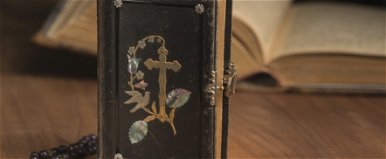a Bible A new chapter was found in the translation of the Gospel of Matthew in 1750. This chapter was found by the medieval artist Gregory Kessel, who examined manuscripts in the Vatican Library using ultraviolet light. The hidden text was found as part of the Sinai Palimpsest Project, where researchers aim to recover texts that were erased and rewritten by First Age scribes. s. IV-XII centuries.

A secret chapter of the Bible has been discovered that even the Vatican did not know existed
Read more…
Read more…
Palimpsest manuscripts – where previous text was washed or scraped off and then reused – were very popular due to the scarcity of writing materials. However, centuries later, it was discovered that the text could be restored by illuminating the manuscripts with fluorescent or different wavelengths of light. Using these methods, researchers have already deciphered 74 manuscripts, but the latest discovery was particularly special, as it contains a translation that is a century older than the oldest Greek translations, including the Codex Sinaiticus.
The newly discovered translation, first written in the third century AD and transcribed in the sixth century, provides more detail than the Greek translation of Matthew 12. There is a sentence in verse 1 of the Greek translation.
He says: “At that time Jesus passed through the crops on the Sabbath, and his disciples became hungry and began to pick ears of corn and eat them,” while at the end of the Syriac translation discovered by Kessel, “they began to pick ears of corn.” The ears of corn, they rub them with their hands and eat them.”

Was the story of Adam and Eve a major advance? Now an image has emerged that could put the Bible in serious trouble
Read more…
Read more…
“Gregory Kessel has made a great discovery thanks to his deep knowledge of ancient Syriac texts and the characteristics of writing. “This discovery proves how productive and important the interaction between modern digital technologies and fundamental research is when dealing with medieval manuscripts.”
– added Claudia Raab, Director of the Institute for Medieval Research of the Austrian Academy of Sciences.
source: IFL Science












































